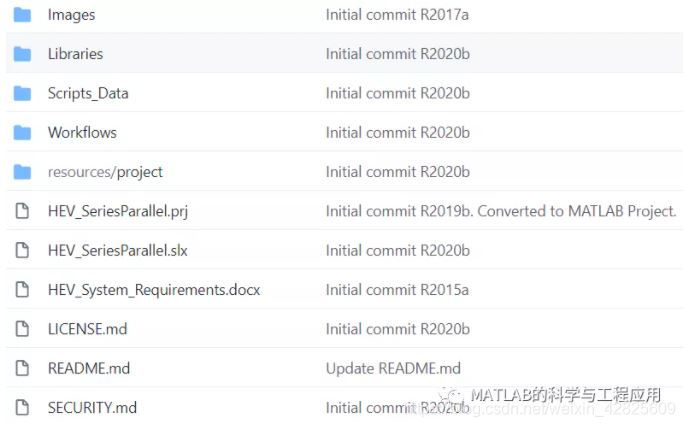本文共 3159 字,大约阅读时间需要 10 分钟。

Hybrid-Electric Vehicle Model in Simulink
Copyright 2011-2020 The MathWorks™, Inc.要开始此演示,请打开HEV_SeriesParallel.prj。这将为您带来最简单的整车配置。请阅读幻灯片以查看所有可用的配置。
To start this demonstration, open project HEV_SeriesParallel.prj This will bring you to the simplest configuration of the full vehicle. Look at the slides to see all of the available configurations.
There are a number of things to be aware of with this demonstration.
Configurations
Stateflow
Power Quality
Details
Configurations
1.1 For the Mean Value and Detailed electrical variants, re-do the selection of the Electrical subsystem if you change the battery subsystem.
When you change Electrical variants, the solver will change. This is done automatically via a script that is called in the Initialization mask of the Electrical and Battery blocks (Configure_HEV_Simulation.m). However, if you change the Battery variant, the solver doesn’t change until you re-select the Electrical variant.
You probably will not simulate this interactively anyway, as Mean Value variants take 30 minutes - 3 hours to run, and Detailed variants take 12 hours – 36 hours to run.
1.2 The “Cells” variant of the battery is only available for the System-Level electrical variant.
Stateflow
The Stateflow model produces three outputs that route to the Motor, Generator, and Engine control systems. However, by default, those signal connections do not affect the output of those control systems. This is because the Mean Value variant cannot run to completion for Drive Cycle 2 when the Stateflow diagram is connected. All other variants run to completion.
If you want to connect the Stateflow to the rest of the model, each subsystem has a manual switch in it that allows you to select a signal that uses the Stateflow output to enable/disable the output of the PI controller.
However, if you do this, be aware the results will not match the Mean Level and Detailed variants (done in the Report Generation demo). This represents a case where we have made a design change and have automatically documented the effect it has on the overall results.Power Quality
3.1 The power quality demonstration uses Signal Processing Toolbox. Though it is possible to measure power quality using Simscape Power Systems alone, there are two reasons why we did not use this.
The FFT analysis in the PowerGUI only checks at a single point in time We wanted to see a representation as time varies to identify the component contributing to poor power quality
The Total Harmonic Distortion block in Simscape Power Systems is only for AC networks. For an HEV, the DC network is the most interesting. Spectrogram works for both AC and DC networks.
3.2 DC Voltage for HEV_PQ_Test_B
The plot for HEV_PQ_Test_B shows very clearly that the generator is contributing to poor power quality. However, the voltage on the DC bus for this test shows other larger problems – the battery can’t supply enough voltage for this situation. This situation was the best example we could find of the spectrogram pointing directly to a component on the network, so we chose to include it.
Follow the script DC_Power_Quality_Analysis.m to see the test case更多精彩文章请关注公众号:
转载地址:http://fcop.baihongyu.com/